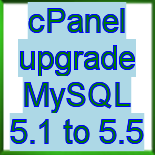cPanel upgrade MySQL 5.1 to 5.5 - Upgrade MySQL 5.1 to MySQL 5.5 through cPanel wizard and configure the server after update
Learn how to update MySQL 5.1 to latest version MySQL Server (e.g. MySQL 5.5.23) through cPanel and make changes to the my.cnf file. In this tutorial I will provide you step by step tutorial for upgrading the MySQL 5.1 to 5.5.
The latest build of cPanel now supports MySQL 5.5 and use can use the cPanel wizard to upgrade your MySQL server 5.1 to 5.5. The MySQL 5.5 provides many features such as better performance, support for multi-core CPUs, fast service and so on. This feature of cPanel will benefits the end users as the MySQL server will be updated by the cPanel.
Here is the video tutorial of: "How to upgrade MySQL through cPanel?"
Make sure that you should back up your database before proceeding with the process. As data is very important and you should take the complete backup of your data using mysqldump tool. There is no option of downgrading the MySQL 5.5 to lower version of MySQL. So, you should take backup for for proceeding.
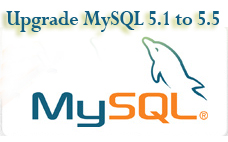
Step 1: Backup your MySQL data using mysqldump
The mysqldump tool is very handy tool for taking the backup of database. Here is the command for taking the full backup of database:
mysqldump --all-databases > all_databases.sql
Step 2: Upgrade MySQL 5.1 to 5.5 through cPanel
Here are steps to upgrade MySQL Server 5.1 to MySQL Server 5.5 through cPanel as root.
a) Login to cPanel as root. You will find the following link:

b) Click on the "Details" Link, It will show a popup as shown below:
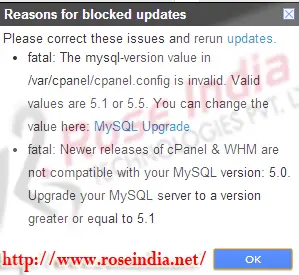
c) To start the upgrade process click on the "MySQL Upgrade" link. Installer will show the following screen:
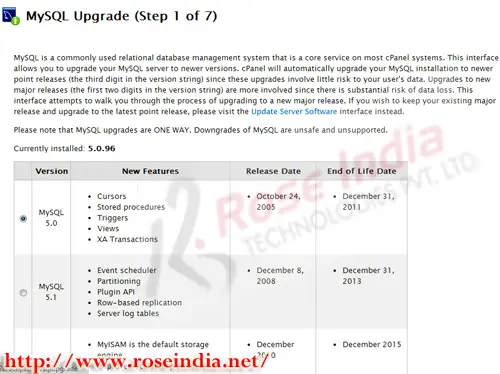
d) Scroll down and select the MySQL version 5.5 as shown below:
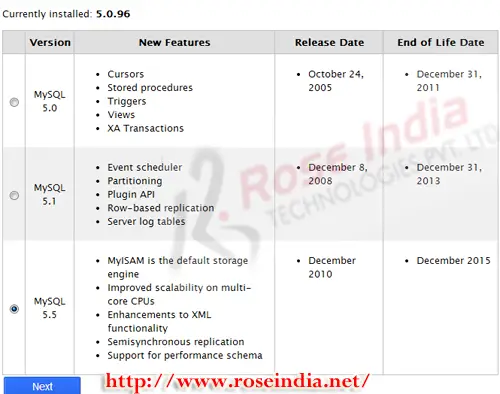
and click on the "Next" button.
e) Installer show the following warning screen:
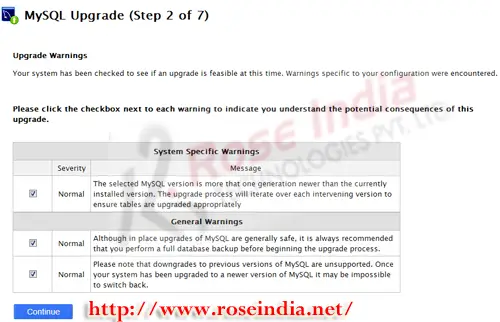
Check all the checkboxes and click on the "Continue" button.
f) Opt for the "Unattended upgrade" and click "Continue" button as shown below:
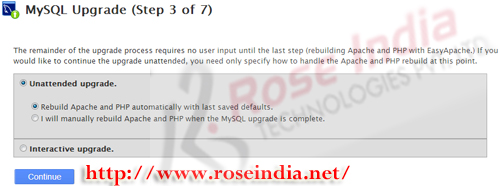
g) Installer will start the upgrade process as shown below:
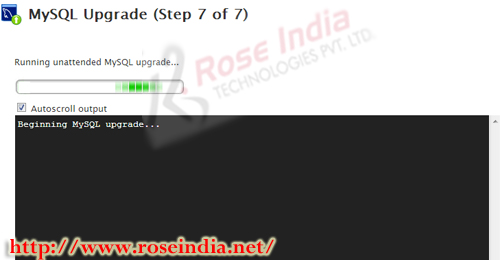
h) After completion installer will show the success message as shown below:
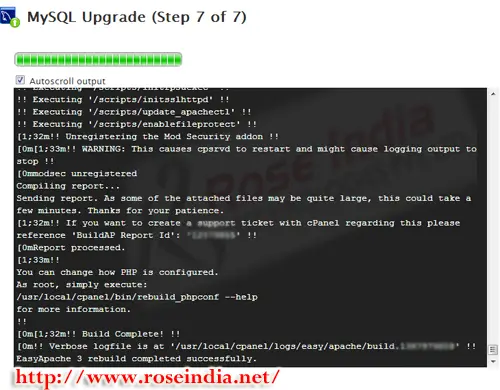
After the upgrade we will login to server as root and then restart the MySQL Sever. 0
Step 3: Copy my.cnf and restart MySQL
Login to your MySQL server box and try to restart MySQL using following command:
service mysql restart 1
If everything is fine mysql will start with this command.
But in some cases it will may give following errors:
MySQL server PID file could not be found! [FAILED] 2
or
service mysql restart
MySQL server PID file could not be found! [FAILED]
Starting MySQL.The server quit without updating PID file (/var/lib/mysql/xxxxxx.pid).
If such error comes it means there is issue with the my.cnf file. 3
You should locate the new configuration file using following command:
locate *.cnf
You will get the following output: 4
/usr/share/mysql/my-huge.cnf
/usr/share/mysql/my-innodb-heavy-4G.cnf
/usr/share/mysql/my-large.cnf
/usr/share/mysql/my-medium.cnf
/usr/share/mysql/my-small.cnf
Now use the following command to create my.cnf file from any of the above file. In my case I am using my-small.cnf file. Use the following command to copy the file:
cp /usr/share/mysql/my-small.cnf /etc/my.cnf 5
After this restart the server using following command:
service mysql restart
The MySQL server should start. 6
Step 4: Restore the data if there is some issue with your data
If you there is no error encountered during the process the cPanel upgrade process should modify the database make it compatible with MySQL 5.5 version. If some error is encountered and you don't have the data then you should restore from backup mysqldump tool.
Step 5: Verify the applications 7
Now you should verify the application.
In this tutorial you have learned how to upgrade MySQL 5.1 to 5.5 using MySQL installer.
Check more MySQL tutorials at our MySQL tutorials home page. 8
